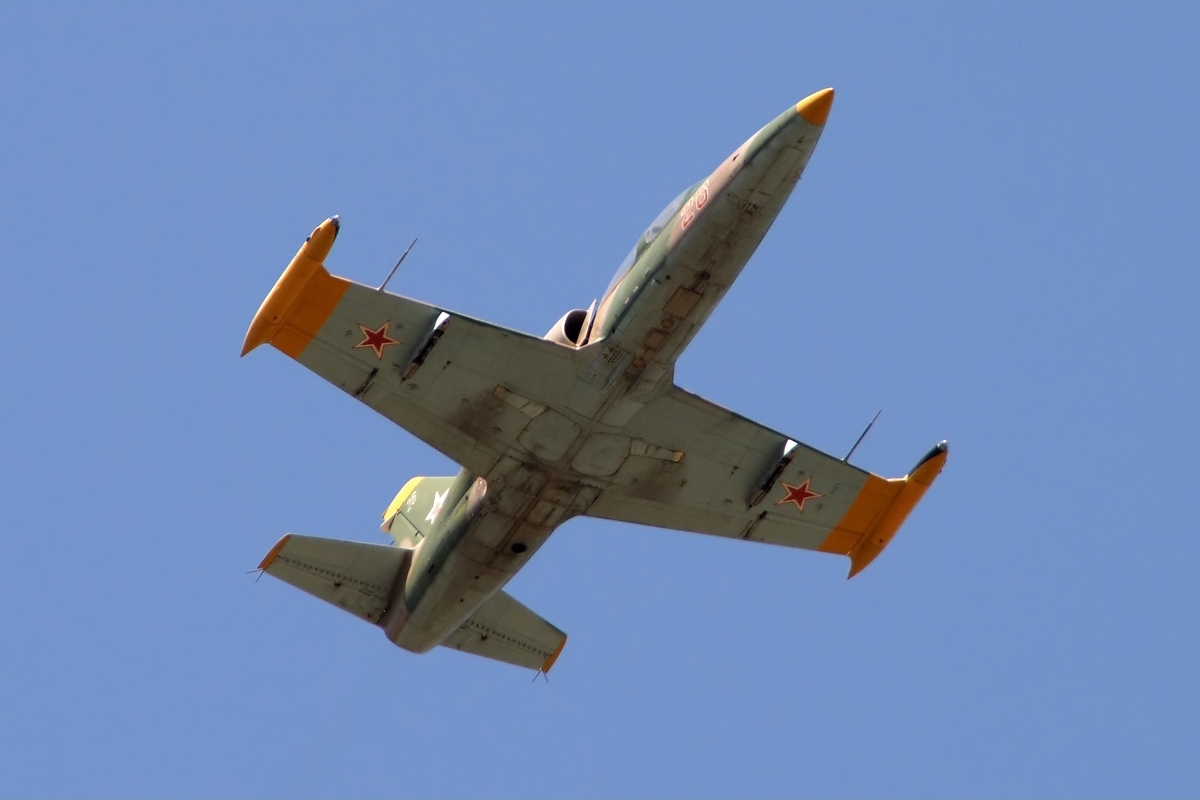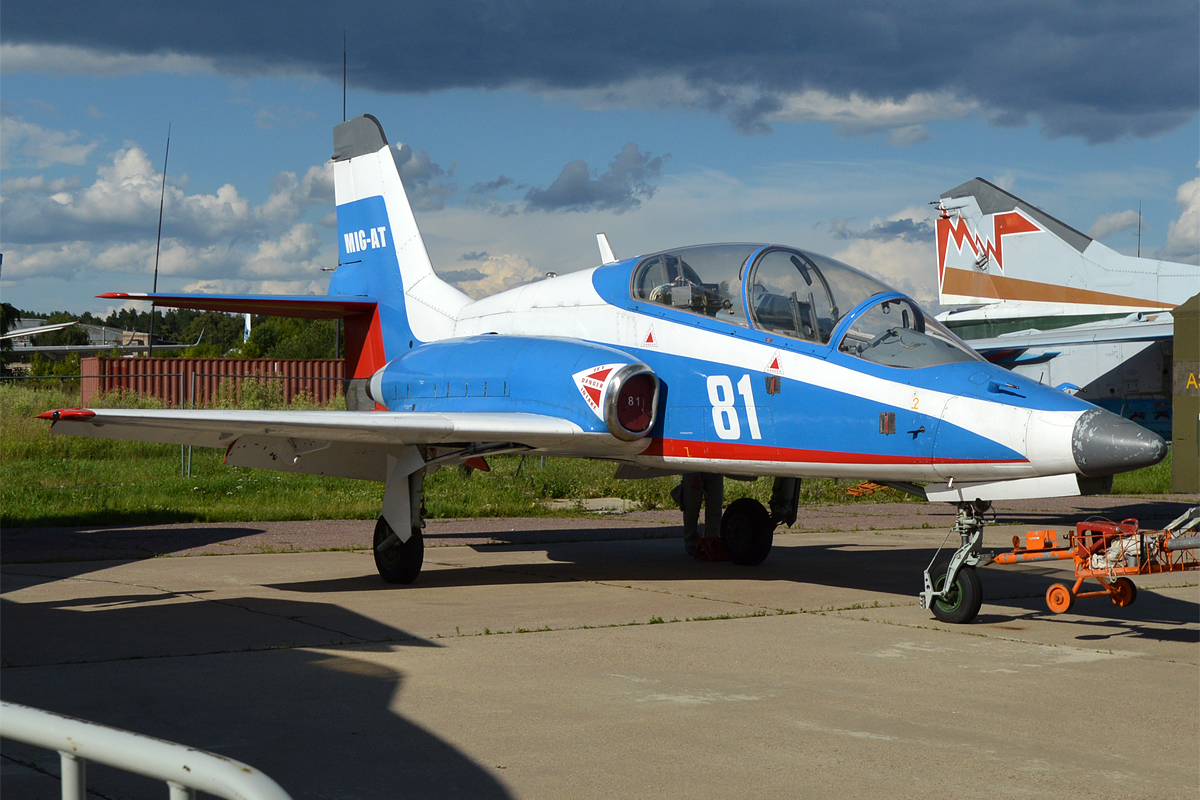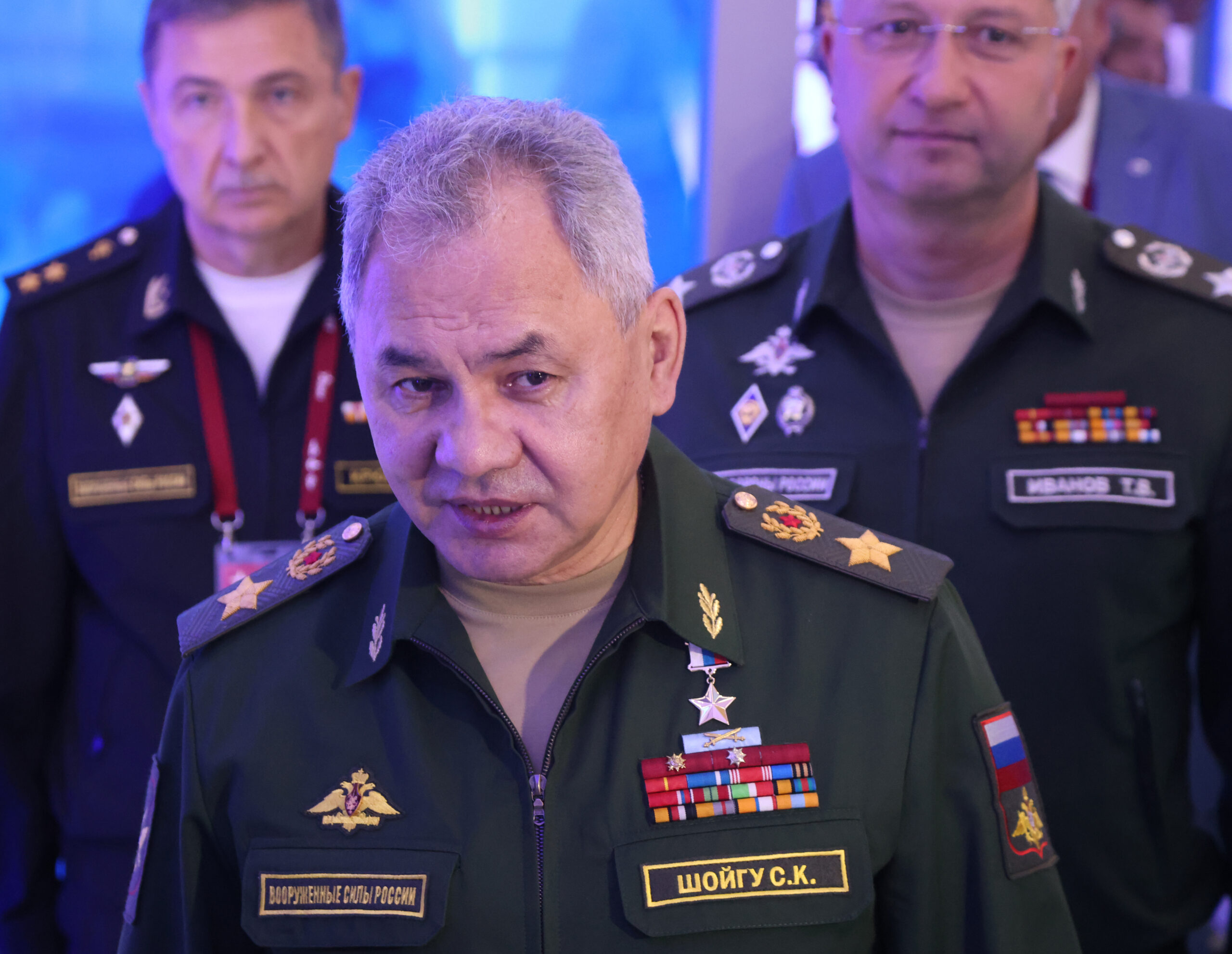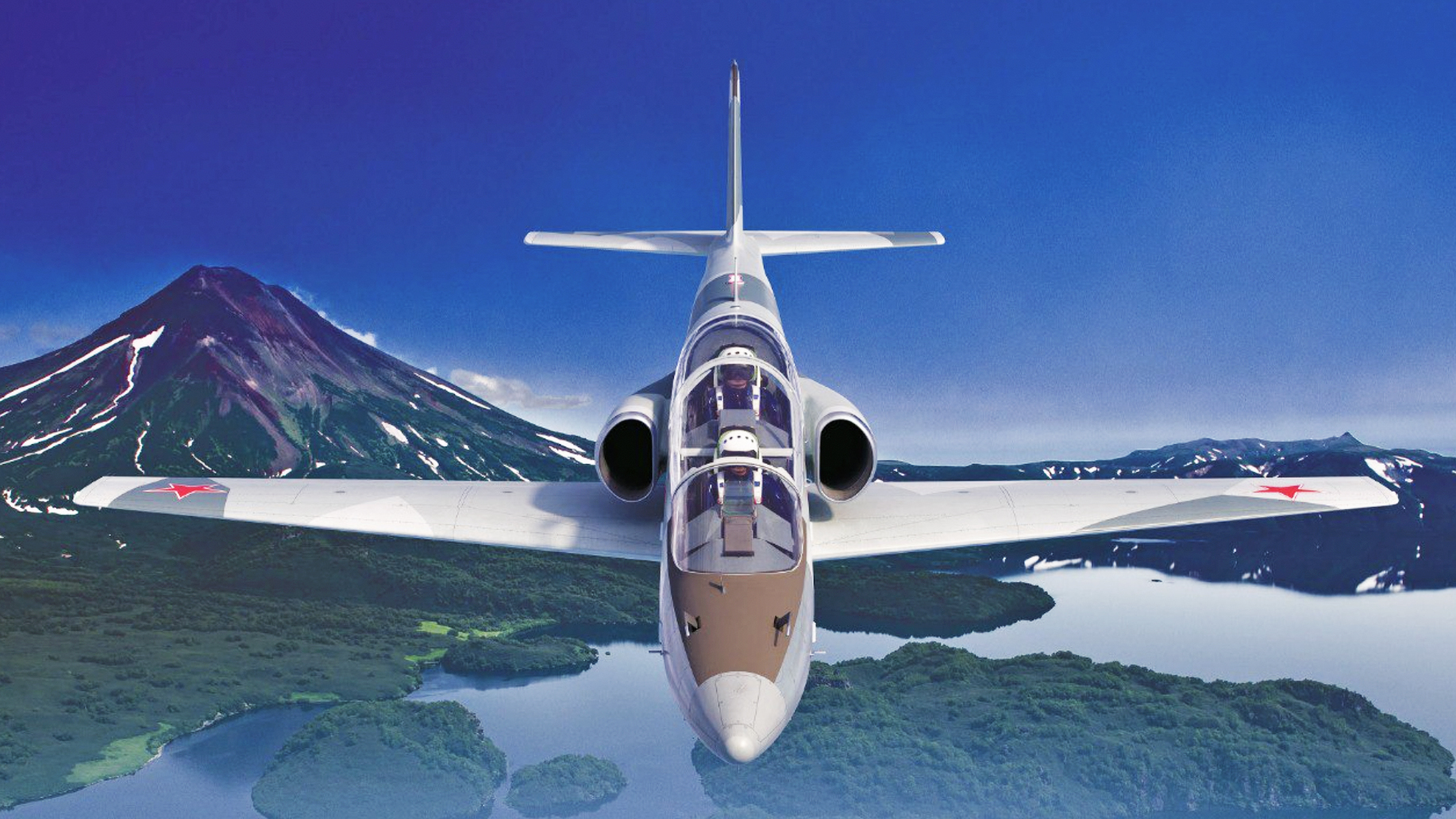The Russian Aircraft Corporation (RAC) MiG has begun work on a new jet trainer, the MiG-UTS. The program is being launched with some urgency, reusing components from a previous MiG trainer design from the 1990s, amid growing problems in Russia’s military pilot training pipeline.
It was announced today on the website of the Rostec state defense conglomerate that RAC MiG has begun the development of the MiG-UTS, with the aircraft described as the centerpiece of a “new pilot training complex.” However, no more details were provided of the other components of this system.
The announcement states that the MiG-UTS is intended to replace the Czechoslovakian-designed L-39 Albatros, which originally entered service with the Soviet military back in the 1970s and is now increasingly showing its age. Ironically, Aero of the Czech Republic continues to develop the basic Albatros design and now offers a thoroughly updated version, the L-39NG, which is very much in the same class as the projected MiG-UTS.

Referring to the L-39, Sergei Korotkov, the general designer and deputy general director of United Aircraft Corporation (UAC), of which RAC MiG is a part, said: “We have great doubts about supporting the operation of the aircraft on which the main training of pilots is carried out today. Therefore, a new training tool is required that will allow us to effectively train flight and technical personnel.”
Affordability also appears to be at the center of the MiG-UTS project, with the decision to develop a single-engine aircraft intended “to make it more affordable and inexpensive to operate.”
“We are creating the cheapest, easiest to operate — both for the pilot and to maintain — single-engine aircraft that fully meets the requirements for the basic training stage,” said Andrei Nedosekin, the director and chief designer at RAC MiG.
As well as low cost, the program also stresses a rapid development period. To help achieve this, RAC MiG will “make maximum use” of the previous MiG-AT trainer, two prototypes of which were built in the mid-1990s. Like the MiG-AT, the MiG-UTS has a straight wing, a tandem two-seat cockpit, and a conventional cruciform tail.

In particular, the MiG-UTS will feature a cockpit derived from that of the MiG-AT cockpit, although it’s unclear if this refers to the avionics, as well, which will be notably dated by now.
An artist’s concept for the new design bears striking similarities to the MiG-AT, although it’s worth noting that the earlier trainer utilized twin-engine propulsion.
The engine selected for the MiG-UTS is the AI-222-25. Although designed in Ukraine, this engine is also manufactured in Russia, by the Salyut company, part of the United Engine Corporation.

The original MiG-AT was also intended to replace the L-39 but was rejected in 2002 in favor of the Yak-130 Mitten, which is powered by two AI-222-25 engines, and offers a higher degree of performance.

The emergence of the MiG-UTS at this stage suggests that Russia wants to replace the aging L-39 with a cheaper and less complex trainer than the Yak-130. In this way, the MiG-UTS could fulfill the basic training syllabus, with combat pilots then moving on to the Yak-130 for advanced and combat training. Currently, the L-39 and Yak-130 appear to be used more or less interchangeably, depending on the unit and base in question.
Plans to introduce the piston-engined Yak-152 for primary training and flight screening have so far come to nothing, making the acquisition of a new trainer even more urgent.

Russia has, in the past, sought to extend the service life of its remaining L-39s, although this has now become much harder due to sanctions imposed after the Kremlin’s full-scale invasion of Ukraine.
Last year, the Russian-military-related Fighterbomber channel on Telegram reported on an apparent problem related to the L-39’s ejection seats. In particular, the explosive cartridges for the seats were becoming time-expired, grounding at least some of the jets, with Russian industry unable to provide replacements.
“The Czechs, of course, do not sell [the cartridges] to us,” Fighterbomber wrote. “Our Yak-130 aircraft are too few to train all available cadets on them and we will not have time to build new ones.”
Fighterbomber subsequently reported that the decision was taken to fly the available L-39s with the ejection seats disabled — with the presumption that the instructor and student signed an appropriate consent form.
Whether related or not, it was reported in August 2023 that the commander of the Maykop training airbase was killed in an L-39 crash that also left the senior flight instructor from the Akhtubinsk flight test center injured.
In theory, it takes around five years to train a Russian military pilot. The first two years are spent on theoretical studies, before practical flying starts in the third year, in the L-39 and/or Yak-130, initially alongside an instructor, before soloing.
In the fourth year, successful candidates are separated into fighter, tactical bomber and attack aircraft, transport, long-range bomber, and rotary-wing streams. The fifth year consists of advanced and combat training and pilots will start to fly their future operational aircraft or a type with similar qualities.
It’s also possible that the development of a new jet trainer indicates that the Russian military may be less than happy with the Yak-130 that’s currently in production for domestic and export orders. There have been suggestions that the Yak-130 is considered too expensive for Russia and the type also suffered from some high-profile accidents during its development, leading to delays and a redesign of its flight control system.

Provided the MiG-UTS is fitted with advanced avionics, it could potentially also be used for advanced and combat training, preparing pilots for frontline fourth-generation fighters, and upgraded versions thereof. This is something that Russia’s L-39s are not suitable for. On the other hand, the straight-wing MiG-UTS is never going to replicate a high-performance combat aircraft as well as the swept-wing, twin-engine Yak-130 can do.
It’s noteworthy, perhaps, that the MiG-AT was at one time intended to have a reprogrammable flight control system that would be able to better simulate the handling of fighters, as well as less maneuverable bombers and transports. This could also be resurrected to make the MiG-UTS a more versatile training aid.
Meanwhile, it seems that Russia is increasingly facing a military pilot shortage, something that will only be exacerbated by the personnel losses sustained in the Ukraine war.
As long ago as 2016, Russian Minister of Defense Sergei Shoigu stated that there was a shortage of 1,300 military pilots, equivalent to 20-25 aviation regiments. At the time, Shoigu said that the problem would be addressed by 2018.

Clearly, that didn’t happen. As of early 2019, reports in the Russian media were quoting a Telegram channel, The View of a Man in Stripes, run anonymously “by former high-ranking military personnel.”
That channel stated: “If the Air Force does not declare a state of emergency and take emergency measures, then we will soon simply not have any military pilots left. The gap of 1,300 pilots, which Sergei Shoigu announced three years ago, not only is not decreasing but is also growing.”
The same account described one “elite” regiment, the 8th Aviation Division of Special Purpose, at Chkalovsky, near Moscow, as having no available pilots at all.

As well as routine retirements due to age or health reasons, or transfers to non-flying posts, many pilots and navigators have been leaving Russian military service for jobs with commercial airlines. The war in Ukraine — and the frequently poor showing of the Russian Aerospace Forces — will hardly have helped recruiting since then, not to mention the aircrew who have lost their lives in that conflict.
In 2019, the Russian newspaper Svobodnaya Pressa reported that “[the Russian commercial airline] Aeroflot offers such fabulous conditions for switching to civilian life that it is very difficult for even a lieutenant, a major, or a colonel to resist.” An Aeroflot salary at this time was up to 650,000 rubles (around $7,250) per month, compared to around 60,000 rubles (around $670) for a lieutenant, rising to 80,000 rubles (around $890) for a major.
There are also accounts, including from the Fighterbomber military blog on Telegram, of military pilots bribing doctors to have them “decommissioned” from service on medical grounds, allowing them to take up jobs in the civilian sector.
All in all, the Russian military pilot training enterprise is facing some serious issues right now. Time will tell whether the MiG-UTS will be the solution to any of those problems, or if it’s destined to be another paper project that fails to deliver.
Contact the author: thomas@thedrive.com
